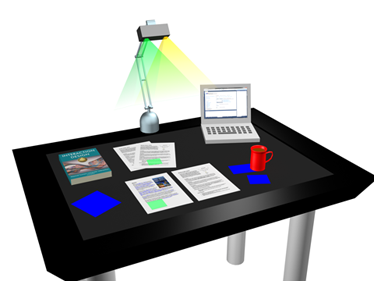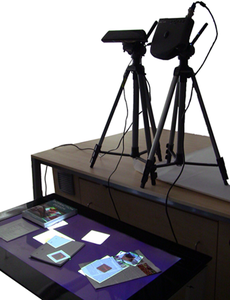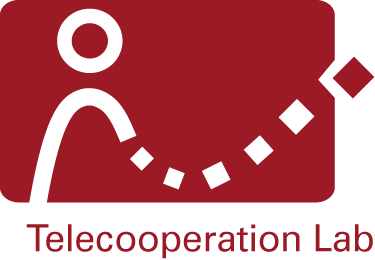
Interactive tabletops are becoming increasingly widespread, with researchers starting to deploy and study these systems in-the-wild. Given the recent advances in creating high-resolution thin display technology and the falling cost in hardware, we anticipate that these systems will soon augment normal office desktops or meeting tables in our daily life and become an integrated part of furniture. Consequently, these devices will take two roles. First, an interactive display to visualize and manipulate virtual objects and second, a place to put everyday physical objects on it (e.g.books, printed documents, laptops, etc).
The latter usage poses a set of new challanges to interface design to allow a fluid and intuitive use of the system despite the presence of physical objects on the display surface. This project aims at developing supportive interaction techniques which use the occluders' surface as additional displays. The image below shows an example of such a technique: occluded digital objects are visualized on top of the physical objects occluding them.

People
- Jan Riemann
- Mohammadreza Khalilbeigi



